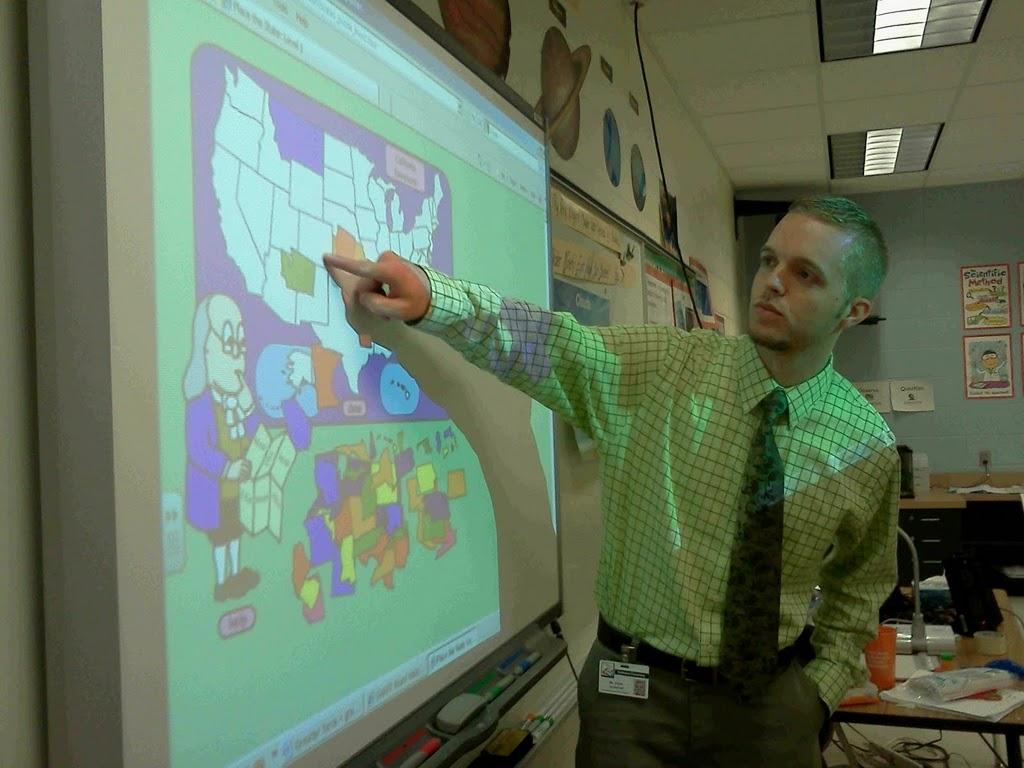
Some say that the rewards of teaching greatly outweigh the time, effort, and energy that it takes to achieve success with the students. ESL teachers across Harrisonburg City Public Schools, such as Smithland Elementary ESL teacher Hunter Rush, know this well.
“Teaching is an extremely difficult, yet rewarding job,” Rush said. “I am fortunate to be able to work with so many different students, but it’s tough figuring out each child’s learning styles and personal interests.”
The job of being an ESL teacher differs from regular teaching jobs because of the nature of the students involved. Some have newly immigrated to the United States and may not be proficient in English. In addition, “many students [have been] dealing with problems that students who grow up in the U.S. never [had] to confront, i.e., living in war zones,” said HHS ESL teacher Ruth Davis. Davis has been teaching for twelve years.
Finding effective ways to teach these students is one of the challenges ESL teachers have to face. Rush has found that the strategies are highly individualized.
“The one-size-fits-all approach does not apply to any well-managed, engaged classroom,” Rush said. “Teaching is about individual students and figuring out what works for them. There is no real formula to reaching every child other than [to] be willing to try.”
Another difficulty faced by ESL teachers is students who do not wish to co-operate. HHS ESL teacher Rachel Hershberger, who has been teaching for sixteen years, believes that a bad attitude can affect the entire classroom.
“[My job is most difficult] when I have a student who is very negative and hateful towards me and the other students in the class,” Hershberger said. “It’s amazing how one person’s negative attitude can change the atmosphere of a class.”
In addition, the preparation involved for teaching a class is also heavy, going far beyond the standard 9 to 5, forty hours a week.
“You do take your work home with you, and you will likely put in more than 60 hours a week when all is said and done. You’ll love just about every minute of it too as long as you are prepared,” Rush said.
Davis didn’t anticipate a few aspects of the job before she began teaching.
“I didn’t expect all the paperwork, bell schedules, and heavy emphasis on test scores,” Davis said.
However, aspiring ESL teachers should not give up hope. According to the teachers, focusing on the good while moving on from the bad is one of the keys to teaching and enjoying the job.
“Don’t sweat the little stuff. Tomorrow is a new day!” Hershberger said.
Rush also emphasizes the importance of establishing a personal connection with each student, a part of teaching that he greatly enjoys.
“I work with students whose first language is not English. I greet them and their parents in their first language to show them that I care, they are important and that I appreciate their culture,” Rush said. “I hope to achieve the respect of each of my students and earn the honor of calling myself their teacher.”
Teaching in any field has its own rewards and surprises that make every day unique. Davis recalls a memory of a few of her former students, who were still grasping conversational English.
“Some of my more interesting memories have to do with some very studious Chinese students who told me (very proudly) that they were learning more about American pronunciation and conversational styles by watching movies,” Davis said.
Davis said that the students became proficient at repeating dialogue from the movies. However, the movies that the students watched were about street criminals.
“It took some time before they realized that this was NOT the English language they should be learning,” Davis said.
Rush offers some advice to ESL teachers new in the field – a position he knows very well, since this is his first year of teaching.
“Ask questions. Don’t be ashamed of your inexperience,” Rush said. “Smile. Don’t take anything personally. Kids are honest and sometimes it hurts when you hear that a student is bored or that you have coffee breath. They keep you on your toes. Embrace that.”
In the end, the reward for many ESL teachers, especially in high school, is to see a student be successful in their class, whether it leads to a diploma or a greater mastery of reading.
“[The most rewarding part of my job is] the relationship I have with my students. Also it is very rewarding to run into students who have graduated and are now productive members of society!” Hershberger said.
Davis agrees.
“The most rewarding thing for me is to see my former students cross the stage with a diploma in hand,” Davis said.
According to Rush, teaching is a valuable and ultimately very rewarding job, however high the workload may be.
“What is most rewarding is the opportunity to make learning fun and exciting,” Rush said. “I get to make a difference every day – a palpable difference that makes the 60+ hours a week all worth it.”






















